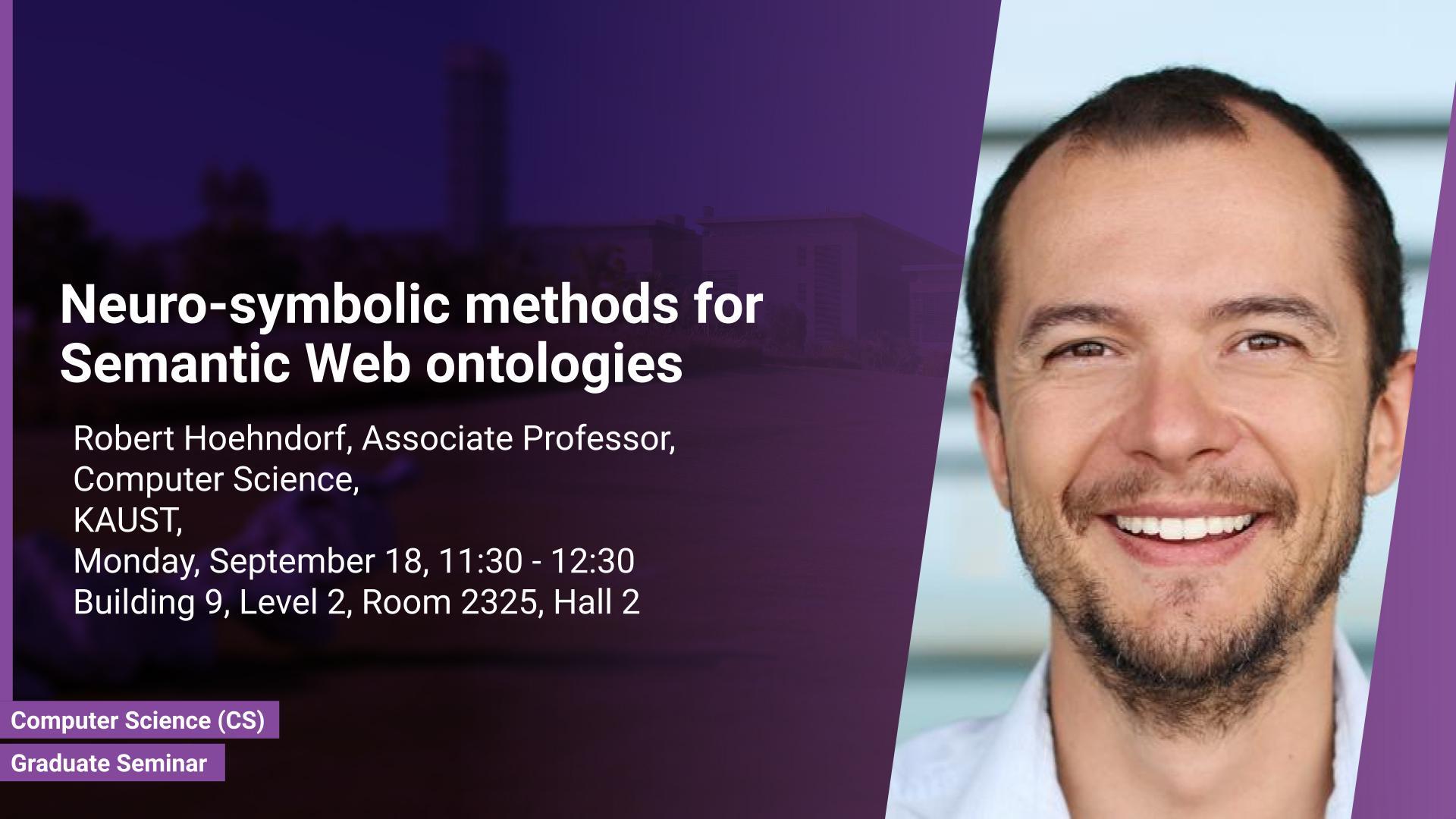Event Start
Event End
Location
Abstract
Semantic Web ontologies are widely used to provide a conceptual schema for sharing and integrating data and knowledge using a logic-based language. The content of ontologies may also be used to provide background knowledge in machine learning models or provide domain-specific constraints that can be verified automatically and used for zero-shot predictions. The combination of embedding symbolic representations (such as ontologies) and extracting symbolic representations from the embeddings are two main components of neuro-symbolic AI systems. I will introduce methods for embedding Semantic Web ontologies and outline some of the properties of the embeddings that relate to model and proof theory. I will further show how the embeddings can be inverted to extract axioms and enable a form of approximate reasoning. My main area of application is in life sciences where several large ontologies have been developed, and I will demonstrate the application of neuro-symbolic methods on the prediction of protein functions using the Gene Ontology.
Brief Biography
Robert is an Associate Professor in Computer Science at King Abdullah University of Science and Technology in Thuwal where he is the PI of the Bio-Ontology Research Group (BORG). Prior to joining KAUST, Robert held research positions at the Max Planck Institute for Evolutionary Anthropology, the European Bioinformatics Institute, University of Cambridge, and Aberystwyth University. He earned his PhD degree in Computer Science from the University of Leipzig. Robert's research focuses on the development and application of knowledge-based algorithms in biology and biomedicine. In bioinformatics, Robert focuses on bio-ontologies and data integration, protein function prediction, and developing models for investigating genotype-phenotype relations. In computer science, his interests lie in Semantic Web technologies and neuro-symbolic methods that combine formal logic and machine learning. Robert has published over 150 papers in journals and international conferences. Robert is Editor in Chief of the Journal of Biomedical Semantics and Associate Editor of BMC Bioinformatics, Applied Ontology, and PLoS ONE.

